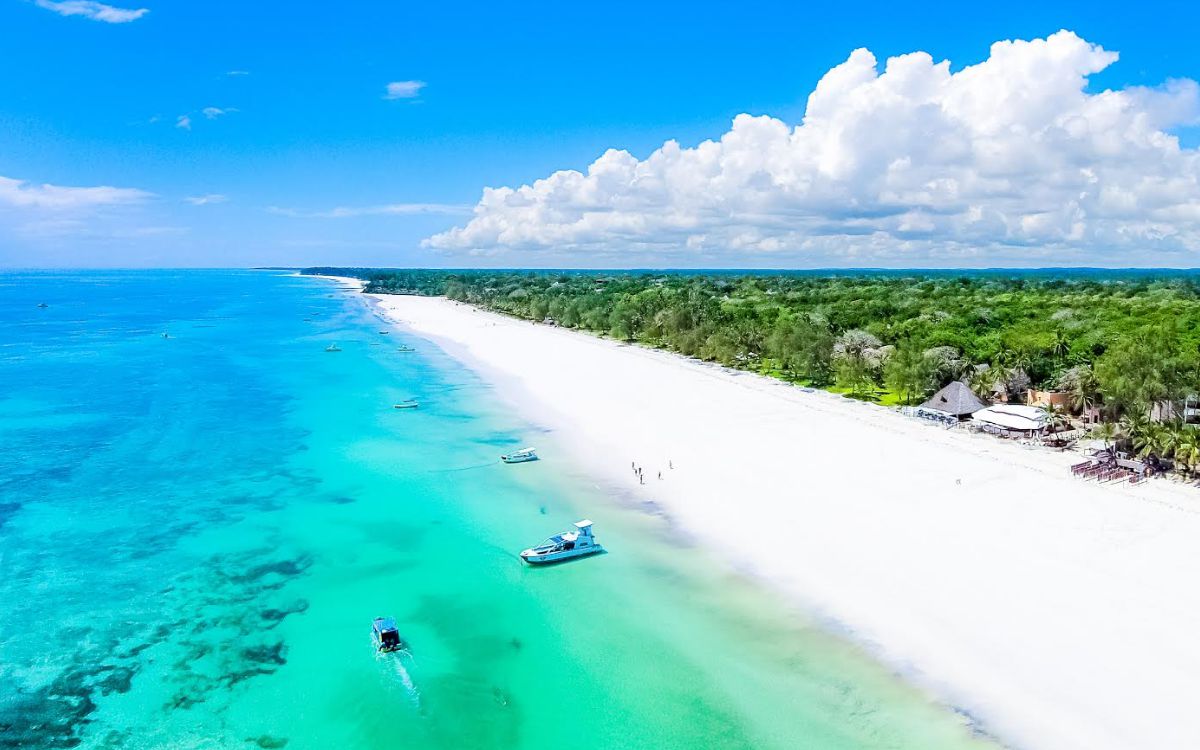Exploring the Kenyan Coast: A County-by-County Guide
Kenya’s coast is an enchanting fusion of history, culture, and natural beauty, attracting travellers from around the world. Each coastal county—Mombasa, Kwale, Kilifi, Lamu, and Tana River—has its own unique appeal, with mesmerizing beaches, marine parks, ancient towns, and cultural riches. Whether you're a history enthusiast, beach lover, eco-traveller, or adventure seeker, the Kenyan coast has something for everyone. For a detailed itinerary, check out our latest article https://www.journeypalette.co.ke/blog/guide-to-kenyas-coast
Here’s a breakdown of what to expect from each region, highlighting key destinations and promoting eco-friendly tourism.
Mombasa County
Mombasa, Kenya's coastal hub, serves as a gateway to the North and South coasts, each offering distinct experiences.
-
North Coast: Known for Nyali Beach and Bamburi Beach, the North Coast is a haven for resort-goers and water sports enthusiasts. Nyali and Bamburi are lined with luxurious resorts, wellness spas, and family-friendly hotels, making it ideal for travellers seeking relaxation. Haller Park, a rehabilitated nature sanctuary, offers eco-tourism activities, including guided walks, animal encounters, and a fish farm.
-
South Coast: The South Coast is famous for Diani Beach, consistently voted one of Africa's top beaches. The powdery white sands, coral reefs, and clear waters make Diani perfect for swimming, snorkelling, and diving. Further south, Tiwi Beach and Chale Island are popular for their tranquil beauty, while Shimba Hills National Reserve offers a unique inland safari experience with rich biodiversity, including elephants and rare sable antelopes.
Mombasa is also home to Fort Jesus, a UNESCO World Heritage Site showcasing centuries of Swahili, Arab, and Portuguese history. This fortress, along with Mombasa's Old Town, provides a glimpse into the coastal culture, architecture, and lifestyle.
2. Kwale County
Kwale is known for its inland attractions, scenic coastal strip, and eco-tourism efforts. The county’s coastline lies south of Mombasa, and Diani Beach, one of Africa’s most stunning beaches, is located here.
-
Diani Beach: Located 30 kilometers south of Mombasa and adjacent to Ukunda, Kwale’s largest town, Diani Beach is a top beach resort destination. Known for its powdery sands and coral reefs, Diani is popular for swimming, snorkelling, and kite surfing. The area also has a vibrant nightlife scene and offers activities like camel rides, jet skiing, and dolphin watching.
-
Ukunda and Msambweni: Ukunda serves as the main access town to Diani, while Msambweni, the division that includes Diani Beach, is known for its quiet beaches and community-centric tourism initiatives.
-
Shimba Hills National Reserve: Inland Kwale boasts this lush reserve, which is home to a large population of African elephants and rare sable antelopes. Shimba Hills offers eco-friendly safari tours, scenic landscapes, and the stunning Sheldrick Falls.
-
Mwaluganje Elephant Sanctuary: This sanctuary provides a more intimate eco-tourism experience with community-led conservation efforts to protect elephants and other wildlife.
-
Funzi Island and Wasini Island: These islands offer unique eco-tourism experiences. Funzi Island is a tranquil escape for mangrove tours, bird-watching, and creek excursions, while Wasini Island, close to Kisite Marine Park, offers pristine coral reefs for snorkelling and dolphin sightings. A visit to Wasini often includes an authentic Swahili seafood lunch and dhow sailing, supporting the local community and eco-tourism efforts.
3. Kilifi County
Kilifi, positioned between Mombasa and Malindi, is an eco-tourist paradise with a rich cultural heritage.
-
Kilifi Town and Creek: Known for the Mnarani ruins, a historic Swahili settlement, and Kilifi Creek, this town offers kayaking, dhow cruises, and stunning sunsets. The creek is lined with mangroves and supports a thriving bird population, making it a popular eco-tourism spot.
-
Watamu: Watamu, known for its Marine National Park and Mida Creek, is ideal for snorkeling, diving, and mangrove exploration. The marine park protects vibrant coral reefs and marine species like turtles, making it a great place to explore Kenya’s underwater ecosystems sustainably. The Arabuko-Sokoke Forest nearby is home to rare bird species, offering guided eco-tours that promote conservation efforts.
-
Malindi: Often grouped with Kilifi, Malindi offers a blend of history and leisure. Gede Ruins, an ancient Swahili town, and the iconic Vasco da Gama Pillar are must-visits for history buffs. Malindi’s beaches, like Silver Sands, are serene and less crowded, perfect for peaceful beach strolls. Nearby, the Marafa Depression (also known as Hell’s Kitchen) offers breathtaking landscapes and sunset views.
4. Lamu County
Lamu, Kenya’s oldest continuously inhabited town, is a UNESCO World Heritage Site and a living museum of Swahili culture.
-
Lamu Town: A UNESCO World Heritage Site, Lamu Town is a car-free island known for its narrow streets, Swahili architecture, and traditional dhow boats. Visitors can explore ancient fortresses, enjoy Swahili dishes, and participate in cultural events like the Lamu Cultural Festival.
-
Manda and Pate Islands: Near Lamu, these islands are known for pristine beaches, snorkelling, and historic ruins that offer insights into Swahili culture. Manda Island provides dhow sailing excursions, and Pate Island showcases ancient ruins from the 8th century.
Lamu is an ideal destination for eco-tourism, as the town emphasizes sustainability and community tourism. Visitors can support local crafts and experience traditional dhow sailing, with minimal environmental impact.
5. Tana River County
Tana River County is an off-the-beaten-path destination for nature lovers and adventurers.
-
Tana River Delta: The delta is one of Kenya’s most ecologically significant wetlands, supporting diverse birdlife and primates like the rare Tana River mangabey. This region is excellent for eco-tourism, with activities like river safaris, bird-watching, and camping.
-
Cultural Encounters: The Tana River region is home to the Pokomo and Orma communities, offering visitors a chance to experience traditional lifestyles and customs. Guided cultural tours and homestays allow travellers to learn about these communities' agricultural and pastoral practices.
Eco-Tourism on the Kenyan Coast
Eco-tourism is a growing focus along Kenya’s coast, with local communities and tourism operators promoting sustainable practices to preserve natural resources. Activities like dhow sailing, nature walks, and responsible marine tours help minimize environmental impact. Supporting eco-lodges, participating in community-led experiences, and purchasing local crafts are all ways that visitors can contribute to sustainable tourism.
Across these counties, travellers can engage with Kenya’s rich Swahili culture, support local businesses, and explore a diverse range of eco-friendly activities, ensuring that the beauty of Kenya’s coast remains for generations to come.



